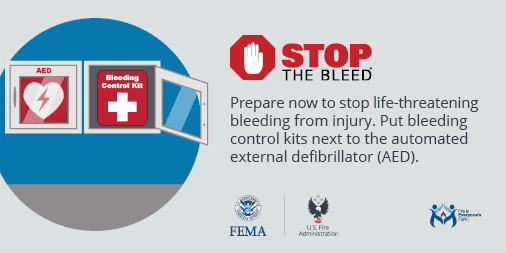InfoGram
New tools assist wildfire detection and smoke forecasting
Learn about tools the National Oceanic and Atmospheric Association has to help fire departments detect wildfire and forecast smoke spread.
Read the article An official website of the United States government Here’s how you know Here’s how you know
An official website of the United States government Here’s how you know Here’s how you know Official websites use .gov
A .gov website belongs to an official government organization in the United States.
Secure .gov websites use HTTPS
A lock () or https:// means you’ve safely connected to the .gov website. Share sensitive information only on official, secure websites.
The U.S. Fire Administration (USFA) sponsors research and conducts studies to support emergency responder health and safety and help fire departments prepare for and respond to fire, natural disasters, non-fire emergencies, and other threats and vulnerabilities.
This information is compiled daily (Monday-Friday) by USFA to provide a snapshot of significant national events potentially impacting the fire and emergency services. A weekly Influenza Surveillance Report is also included during flu season.
Subscribe to receive the briefing through emailUSFA’s Emergency Management and Response – Information Sharing and Analysis Center (EMR-ISAC) promotes critical infrastructure protection (CIP) by sharing CIP and emerging threat information with Emergency Services Sector (ESS) departments and agencies nationwide.
Learn more about what the EMR-ISAC can do for your ESS organization.
InfoGram
Learn about tools the National Oceanic and Atmospheric Association has to help fire departments detect wildfire and forecast smoke spread.
Read the articleNIMS guides all levels of government, nongovernmental organizations and the private sector to work together to prevent, protect against, mitigate, respond to, and recover from incidents.
USFA sponsors research to create safer operational environments for firefighters by increasing awareness about building construction during fires, emergency incident rehabilitation, firefighting techniques and tactics, and more.
Explore these materials to help increase awareness about safer operational fireground environments.
The public relies on first responders during emergencies, and the more substantial the incident or the disaster, the greater the need for assistance delivered by the fire department and others with public safety missions.
General guidance for fire and EMS to prepare personnel, the station, apparatus and the community for emergency response in a challenging environment.
Learn about best practicesUSFA partners with the National Institute of Standards and Technology on research projects to improve the protective qualities of clothing and equipment used by firefighters in operational situations.
Explore our latest research on protective clothing and equipment technology.
Approximately 25 percent of on-duty firefighter fatalities occur each year while responding to or returning from incidents, with the majority of fatalities resulting from vehicle crashes. Vehicle collision is the second leading cause of firefighter fatalities.
USFA sponsors research and studies to help keep EMS personnel and their patients safe, and help prepare fire departments for special EMS operations.

Current events and issues
Learn about the key components of a human trafficking training and awareness program for EMS workers.
Read the articleIf you are a firefighter looking for tips to improve your overall health and fitness, or a fire department leader developing or enhancing a wellness-fitness program, these resources can help.
Almost 70 percent of all U.S. firefighters are volunteers. USFA is working with the National Volunteer Fire Council to help keep volunteers healthy and safe, and to keep the volunteer fire service strong now and in the future.
Browse our volunteer health, safety, and retention and recruitment resources.
This collection of recommended resources will help your fire department prepare for, and respond to, WUI fires. Included are outreach materials, training courses, assessment tools, and links to the latest WUI research studies.
Explore toolkit resourcesStressful Conditions and Crowd Behavior: How Properly Trained Crowd Managers Can Be Life Savers
This presentation explores the differences between how people respond to stimulus as individuals versus how they respond when in a crowd. Here’s what you will learn: